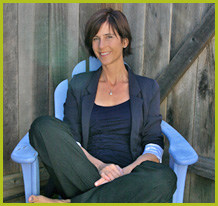In the early part of the 1900’s, Berkeley was finding it’s architectural footing, as the new university attracted thinkers from around the world and the great San Francisco earthquake and fire of 1906 drove waves of refugees across the bay.
Our most beloved architects began to mature and to leave their indelible signatures on the landscape of our young city, including Julia Morgan (one of the first women to graduate from UC Berkeley), Bernard Maybeck (who first arrived in Berkeley in 1892), and John Hudson Thomas. Together these architects were prominent in the Arts and Crafts movement sweeping Berkeley, and strongly influencing the style of the day, with many of their finest public projects and private homes still recognized as the iconic and enduring Berkeley style.
Meanwhile, in 1919 Germany, the Bauhaus movement was born. “Bauhaus,” a German word meaning “house of building”, began as a school of the arts. As the German zeitgeist was turning away from the emotional expressionism movement, an entire group of working architects turned away from fanciful experimentation, and turned toward rational, functional building. Marked by the absence of ornamentation, the Bauhaus strove to restore harmony between the function of a building and its design, and to support the idea that mass-production was reconcilable with the individual artistic spirit.
What is now known as the Midcentury Modern movement was an American reflection of the Bauhaus movement, with a style characterized by clean simplicity and integration with nature. This movement emphasized ample windows and open floor plans, with the intention of opening up interior spaces and bringing the outdoors in. Many Mid-century houses utilized then-groundbreaking post and beam architectural design that eliminated bulky support walls in favor of walls seemingly made of glass.
Joseph Eichler, a post-war American real estate developer, was one of the influential advocates of bringing Modernist architecture to the general public, building many Bay Area homes featuring “walls of glass”, and open floorplans, with a strong emphasis on “bringing the outside in,” achieved via floor-to-ceiling windows looking out on protected and private “outdoor rooms.” Other developers drew on stylistic elements of Eichler homes in their own designs, later called “Eichleresque.”
When I began my real estate career in 1988, the iconic early Berkeley architectural styles were much in demand, including “Craftsman” homes from the Arts and Crafts era, as well as the Mediterranean, Tudor, and Brown Shingle homes built around the same time. Berkeley home buyers were paying top dollar for these “old” (early 1900s) styles, while everything else was lumped together on a lesser tier.
As I studied East Bay architecture and accompanied inspectors and engineers as they did their work, I began to see that “newer” construction — by which I mean anything past the Midcentury era — is sadly lacking in quality of materials, esthetics, and workmanship. In fact these homes do embody those fears that originally germinated the Bauhaus; the loss of individuality of expression when subsumed by mass production.
This new construction has everything to do with cutting costs through cutting corners, resulting in homes that are disconnected from their surroundings, and disconnected from their human occupants. These homes have nothing in common with the intentionally spare beauty of a well-built Midcentury home that exists harmoniously with its environment both indoors and out.
Luckily, over the past decade, the East Bay housing market has seen a surge of interest in, and appreciation for, Midcentury architecture. Prices of Midcentury homes have caught up to, and often surpass, the older iconic Berkeley styles, as young hipsters with retro tastes vie to outbid each other for Eichleresque digs.
Many who already own homes are opting to remodel in the Midcentury style, and those who can’t remodel, go shopping for Midcentury furniture and art. Local specialty shops are shipping cargo containers full of vintage “Danish Modern” teak from Europe to their East Bay warehouses, and stocking up on consignments of Eames chairs and George Nelson clocks. Reproductions of Midcentury decor have gone mainstream, making it easy to capture the “Mad Men” vibe of that era without having to pay for originals.
To see a real live Midcentury Modern home, view this 1950 “Eichleresque” property I am representing, in the Berkeley Hills.
If you’d like to have some fun with Midcentury style, here are some resources I have collected for you:
Angela Adams
Design Within Reach
CB2
Modernaire
Midcentury Mobler
Bay Home Consignment
Dot and Bo
AllModern
KCC Modern Living
 Hello, I’m Holly Rose. I help people buy and sell homes in the East Bay. I specialize in fine old homes with interesting or historically significant architecture.
Hello, I’m Holly Rose. I help people buy and sell homes in the East Bay. I specialize in fine old homes with interesting or historically significant architecture.